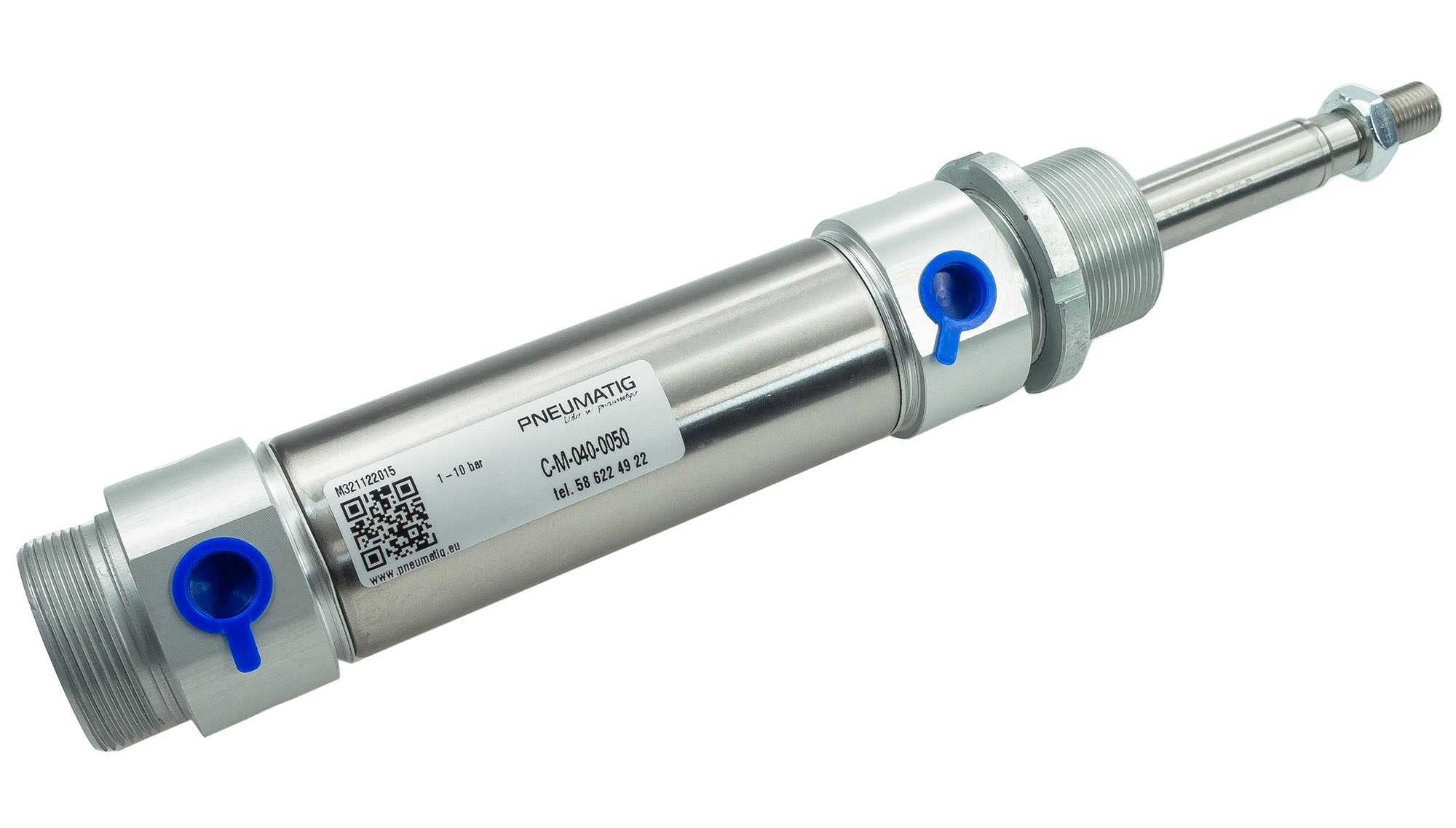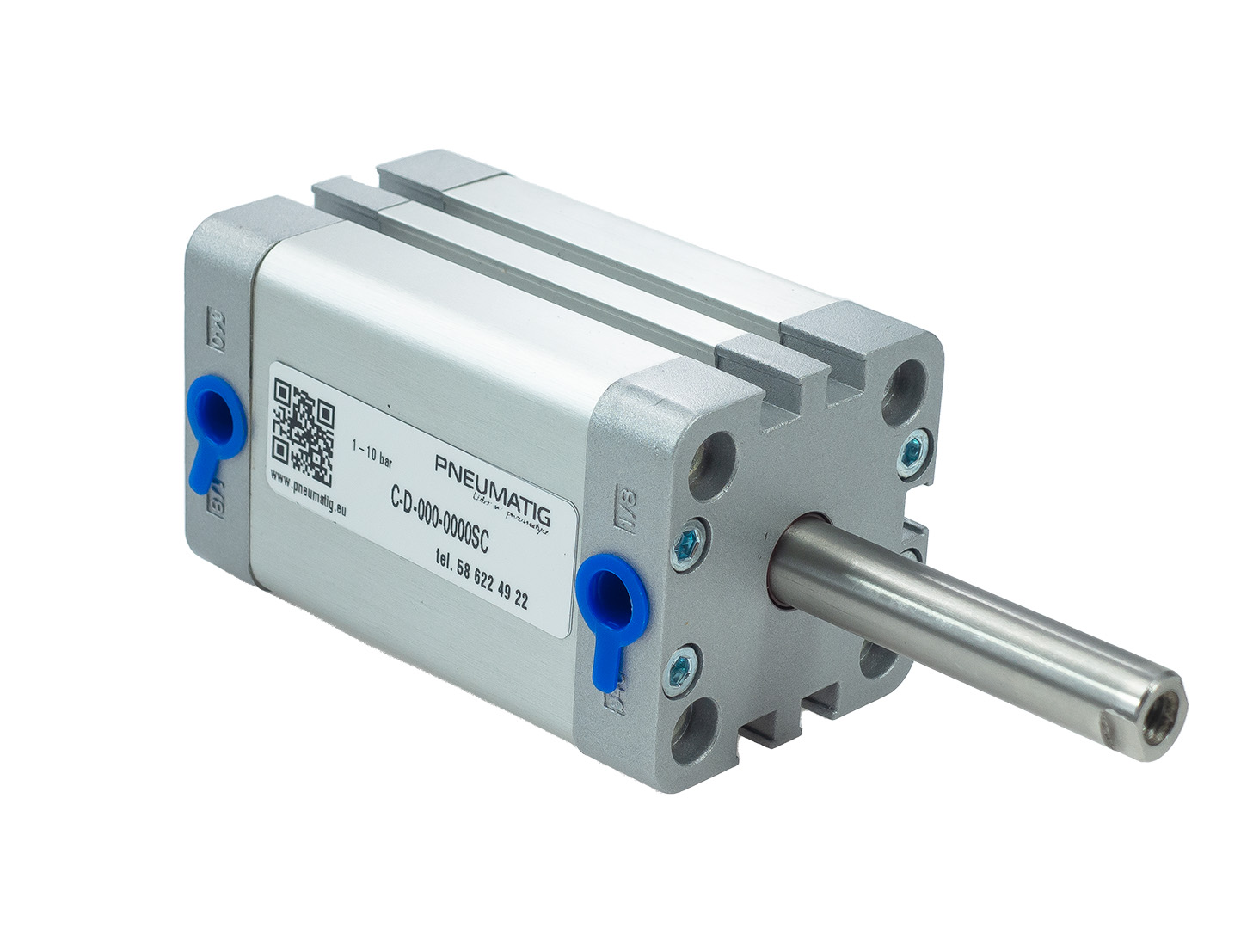Actuators are used as drives in machines and devices. They convert the energy of the working medium into mechanical energy. The universality of possible uses arouses great interest in these devices.
To face this challenge, we present the operating principles, types of actuators and their purpose. We hope this helps you choose the ideal equipment for your companies.
- What is an actuator?
- What types of actuators are there?
- How does a pneumatic drive work?
- How much does a pneumatic drive cost?
Actuators – application and structure
The actuator converts the pressure energy of the working medium into mechanical energy, which occurs in the form of a linear or rotational movement. In other words, it can be compared to the muscles that move the limbs. This allows the machines to grab, move, rotate and even cut anything the operator requests.

Actuator can be found in almost all mechanisms that use movement as an element of a work function. An additional argument for this Actors is the fact that they are mechanisms that normally require enormous forces.
These simple but undoubtedly reliable components save lives, provide entertainment and ensure the implementation of plans in production facilities.
The time is approaching when… Actuators are used in the manufacture of robots intended to replace people working in extreme conditions.
They are not harmed by high levels of dust, eliminate threats by supporting military and police pioneers and also influence the production of coal, gas and oil. For these reasons Actors are made of the highest quality steel and are resistant to the harmful effects of water, extreme temperatures and corrosive substances.
The basis for the design of each actuator are:
- Cylinder;
- Pistons;
- Piston rod.
There is also a factor that ensures that the rod returns to its original position. In a single-acting drive, this function is usually performed by a spring.
It is also necessary to emphasize the fundamental difference between Pistons and Piston Rod . Despite the similar nomenclature, both actuator elements perform completely different tasks.
What is the function of the piston rod?
The piston rod moves back and forth which allows transferring mechanical energy from the piston to the working element of the working machine.
Types of actuators
The classification of different types of actuators is determined by the design of the device and the type of media used. It should be added here that many drive design elements are permanent and can be found in any type of device, regardless of its design. We're talking about piston rods, different types of seals, and cylinders found in different types of actuators.
Types of drives in terms of construction:
- type of movement;
- piston shape;
- piston rod shape;
- Construction details.
Actuators – type of movement
Based on the nature and direction of the movement caused by the actuator, the structures are divided into:
- linear drives;
- Unilateral action;
- Double action;
- angular units;
- Curvilinear actuators.
Actuators – piston format
- Pistons;
- single-piston drives;
- Two-piston drives.
Pistonless drives are divided into:
- membrane actuators;
- bellows units;
- Actuators for bags and tubes.
Types of Actuators – Specific Project
Less common devices, but no less important for the industry, should not be ignored here. They are actuators with a very specific design and these differences arise from the way they are used.
Specific actuators:
- Telescopic;
- Effects;
- Pneumatic muscles.
Actuator working medium
The type of medium plays a fundamental role and predisposes the actuator to operate in a specific environment.
Drive types: Classification according to the medium:
- hydraulic cylinder;
- Electric drive;
- Pneumatic drive.
In the above cases, the function of the working medium takes on a similar form: the liquid. Electricity and air.
Among all mentioned Pneumatics is one of the most ecological technologies known in the world. For this reason we focus on pneumatic drives used in industry and everyday life.
Pneumatic drives – types
Compressed air is clean, which means that its use has no impact on the environment. The lack of sensitivity to temperature fluctuations also favors a wide range of possible uses for pneumatic drives. On this occasion, the high level of safety for both machine users and the devices themselves cannot be forgotten. Actuator leakage does not pose any risk to the environment in which it is operated; pneumatic drives are installed where there is a risk of explosion.
We would like to remind you, Types of pneumatic actuators Above all, the type of movement that the actuator generates during operation is taken into account. Furthermore, based on the working element used, we can differentiate between bellows drives, piston drives and diaphragm drives.
However, the most commonly used classification of actuators is the following distinction:
- linear drives;
- angular units;
- Curvilinear actuators.
Typically, single-sided and double-sided models are used. In the first case, the medium (compressed air) creates a force that causes an effect in one direction. The machine's software decides which force (pull or push) is applied most frequently.
In double-acting actuators, air pressure causes the piston to move in both directions.
Single-action drive – functional principle
Single-acting cylinders are considered linear devices. They are characterized by their simple structure and uncomplicated operation. In any case, this is reflected in the exceptional effectiveness, longevity and reliability of this type of actuator.

Its characteristic is the presence of only one opening that supplies the chamber with the working medium, which consequently causes the mechanism to work in only one direction, towards you or away from you. The return to the initial position occurs, for example, via a spring.
Drive types depending on the direction of action:
- Impulse pneumatic actuators;
- Pneumatic traction drives.
In the first case, compressed air pushes the piston out of the cylinder during the work cycle. In the second case, the opposite effect occurs. The medium goes in and somehow pulls the piston with it.
The single-acting actuator has significantly smaller dimensions than its double-acting counterpart. It also presents lower operating costs, both in terms of services and equipment replacement.
An example is a pneumatic pressure drive . Due to its structure and small dimensions, the device can be easily mounted on a frame. It's also useful when you need to block or manipulate small elements.

The spring mentioned above plays a very important role in a single-acting actuator. As the piston compresses, energy builds up in the spring, forcing the piston to return to its original position. This completes the full work cycle, which can be divided into four phases:
- early stage;
- acceleration phase;
- Solid phase;
- Braking phase.
1. Initial phase occurs after valve activation, which increases the pressure in the rear chamber of the actuator through special connections. At the same time, the air in the front chamber is pushed out under the influence of pressure.
2. Acceleration phase is the moment of reaching maximum speed, which occurs at approximately 15-30% of the drive stroke. It should be added that it is inversely proportional to the volume of the exit chamber. For components with the same piston diameter, a shorter stroke leads to higher acceleration.
3. Fixed phase depends on several important factors:
- frictions;
- loads;
- assembly locations;
- Valve flow.
The actuator speed is controlled by adjusting the output flow.
4. The braking phase is the final stage of the jump. During this time, the anterior chamber output is regulated. The drive speed is reduced until the end of the stroke.
Double acting cylinders – how do they differ from single acting cylinders?
Double-acting drive is equipped with two working chambers, which significantly expands the application possibilities and at the same time distinguishes the mechanism from other unilateral units . Another significant change is the absence of a spring that guarantees the mechanism's return to the starting point. This effect was achieved through the use of two doors that allow compressed air to enter and exit.
It is worth mentioning that these actuators are much more efficient, especially because they work faster in one cycle.
The correct determination of the required actuation force, which depends on the air pressure and the piston surface on which the medium exerts its pressure, has a significant influence on this issue.
This value can be determined using the appropriate formula:
F = πD²/4 xp (kg)
D expressed in cm is the nominal diameter, sir (bar) (atm) refers to the supply pressure. The actuator diameter is communicated to the user in the product specification. Its dimensions are given in millimeters. Therefore, it is necessary to convert it to centimeters before making the appropriate calculations.
The necessary analysis can be performed in a similar way Push and pull forces . In this case the formula applies:
F1 = π (D²-d²) /4 xp (kg)
Just to clarify, Thrust force F is the result of powering the actuator from the piston side. At traction level F1 The drive takes place on the piston rod side. The equal sign is visible behind the F1 symbol means the formula refers to the magnitude of the pulling force.
Meaning of other symbols:
- D (cm) – nominal diameter of the actuator;
- d (cm) – piston rod diameter;
- p (bar) (atm) – supply pressure.
It must always be remembered that the force F is always greater than the force F1.
They are a great help Tables of actuation forces of pneumatic drives generally available on the device manufacturers' websites.
Double acting cylinders owe their high recognition among users to:
- Reliable construction;
- The simplicity of the plot idea;
- High Availability;
- standardization of execution;
- Maintain large areas of strength.
Thanks to the standardization of actuator manufacturing in accordance with ISO, CNOMO and UNITOP standards, it is possible to assemble the mechanisms even if they come from different sources. However, it should be noted that this solution is not recommended in all cases.
Installation of actuators Buying from a recognized supplier always guarantees the compatibility of the devices in terms of the quality of the materials from which they are made, which in turn results in high durability, precision of connections and trouble-free operation.
Shock-absorbing double-acting cylinder
What is pneumatic drive shock absorption ?
Damping in actuators is intended to soften and smooth the operation of pistons and connecting rods. The process aims to increase the useful life of the actuator components.
Amortization works on the principle of an air cushion created inside the actuator. Limits the negative impact of team blows Piston – piston rods are in extreme positions.
To achieve this, manufacturers use several types of actuators with a seal that has the properties of a check valve. Prevents air from escaping from the drive chamber when the shock-absorbing sleeve mounted on the piston rod enters it. Air escapes through a small hole in the lid.
Damping is typically used in various types of long-stroke actuators. This is because short-stroke mechanisms are not capable of reaching the required speeds. Remember that with a small stroke actuator, the actuator will brake almost immediately after starting its working motion.
Pneumatic drive – what price?
Compared to the value of the machine, the price of actuator types is really insignificant. Most importantly, a properly selected actuator from different types of actuators can significantly extend the service life of the entire set of mechanisms, thereby avoiding failures and downtime.
Pneumatic drive – price
Although it depends on the manufacturer, it should not be the main selection criterion. The origin of the devices, their finish and reliability are much more important.
Therefore, being able to use it is of great importance Contact Form to access free advice and tips. Specialists in the field of pneumatics. They will be happy to answer any technical questions about the actuators you are looking for and the accessories you need.

























































